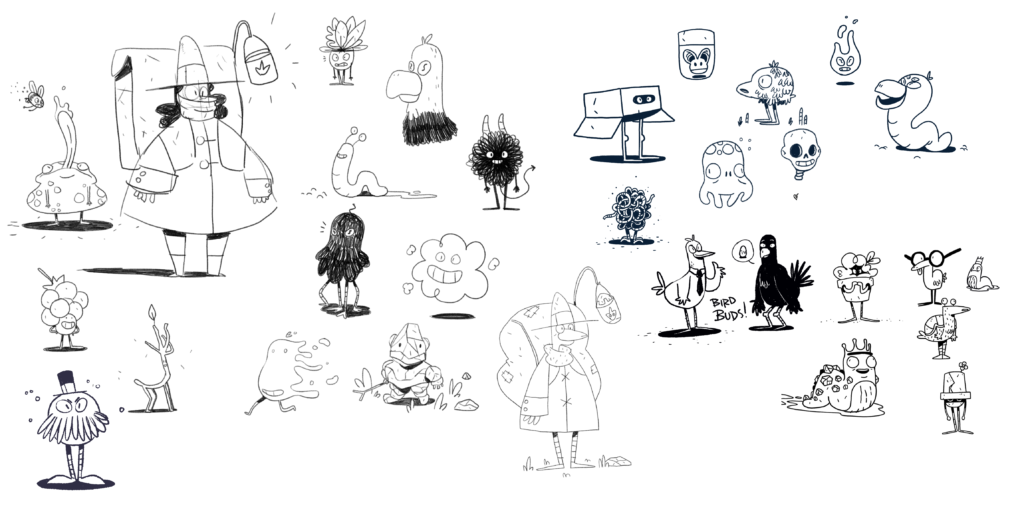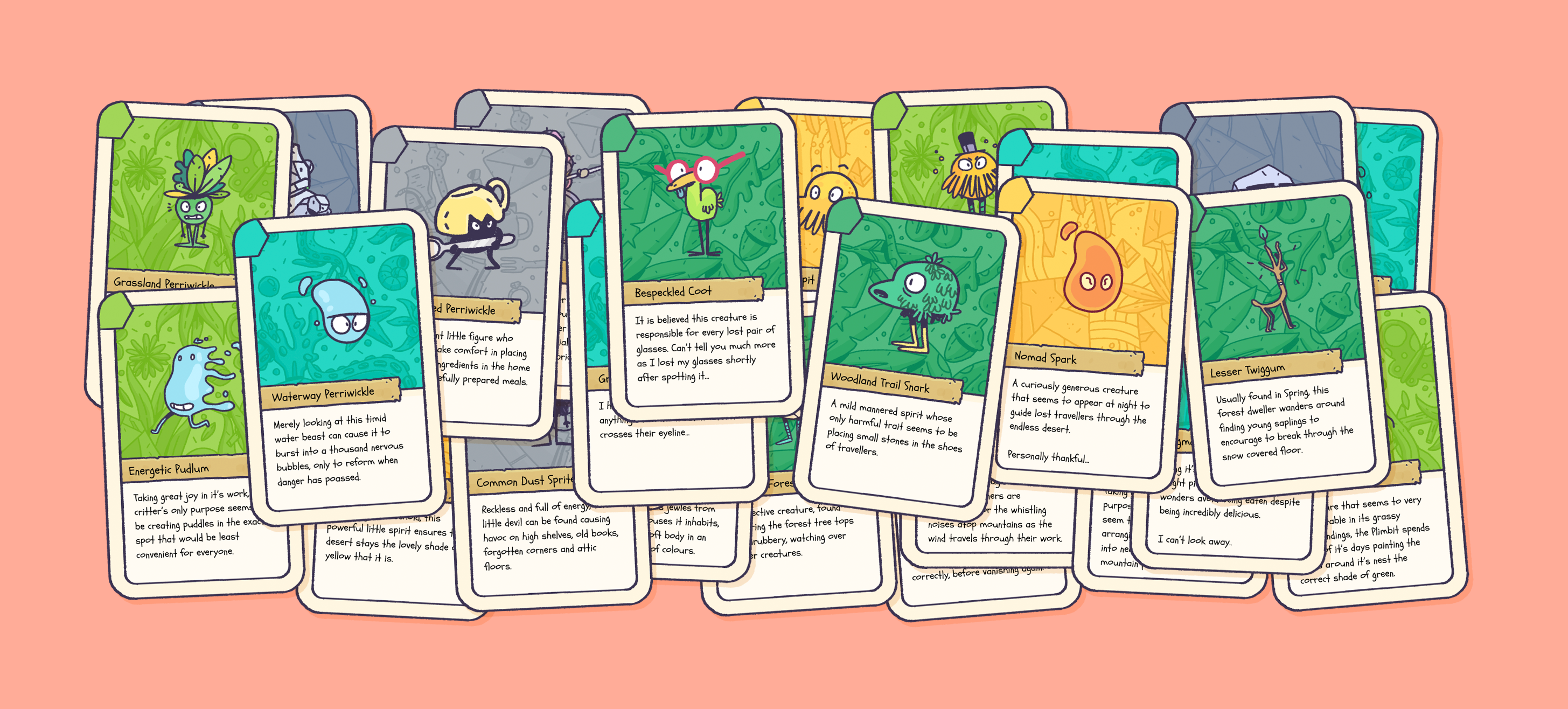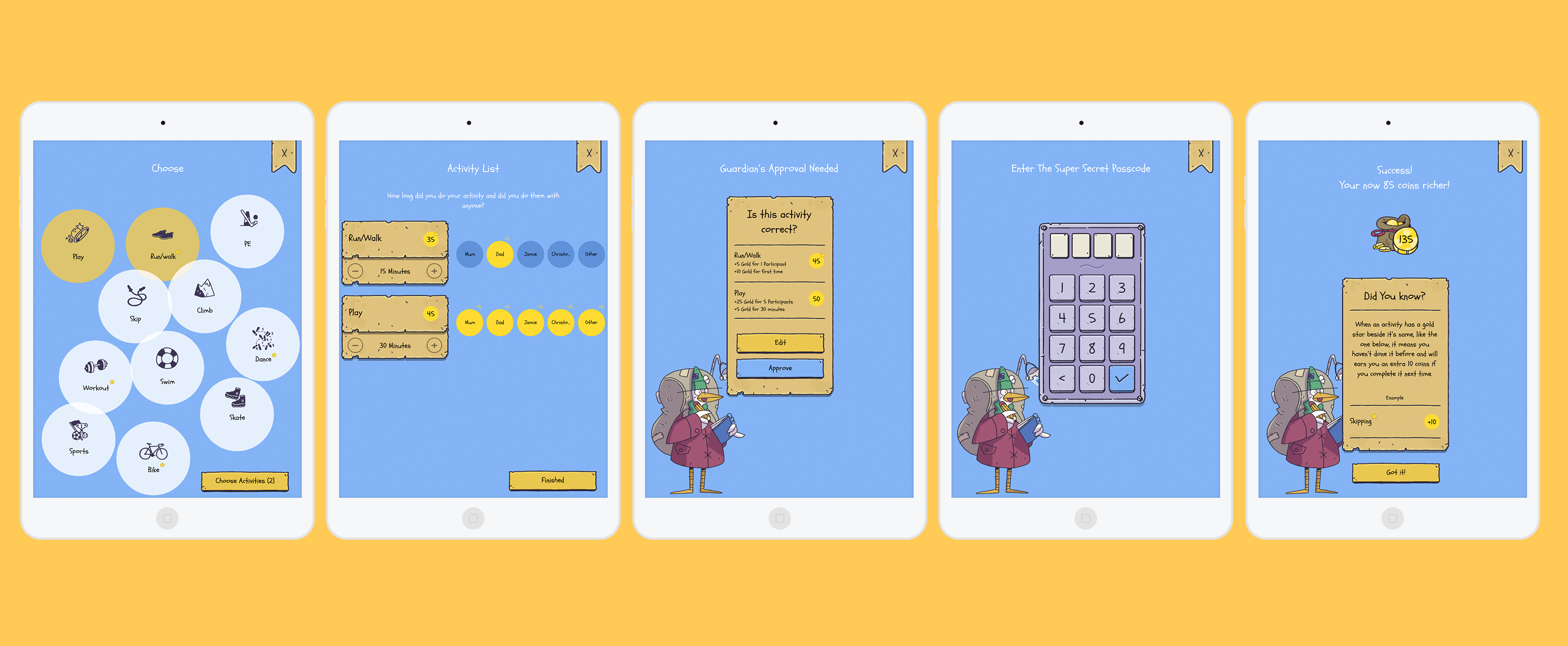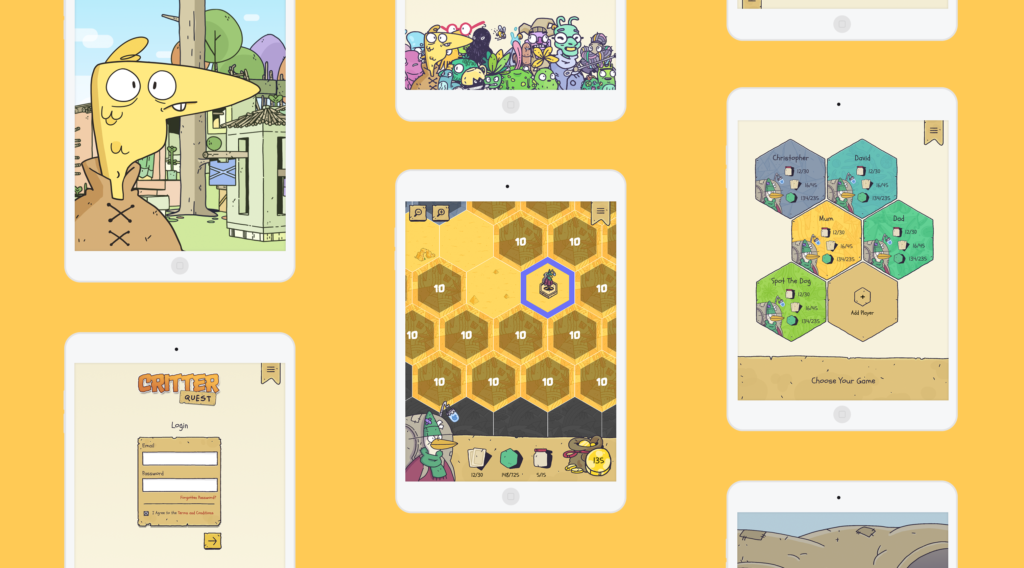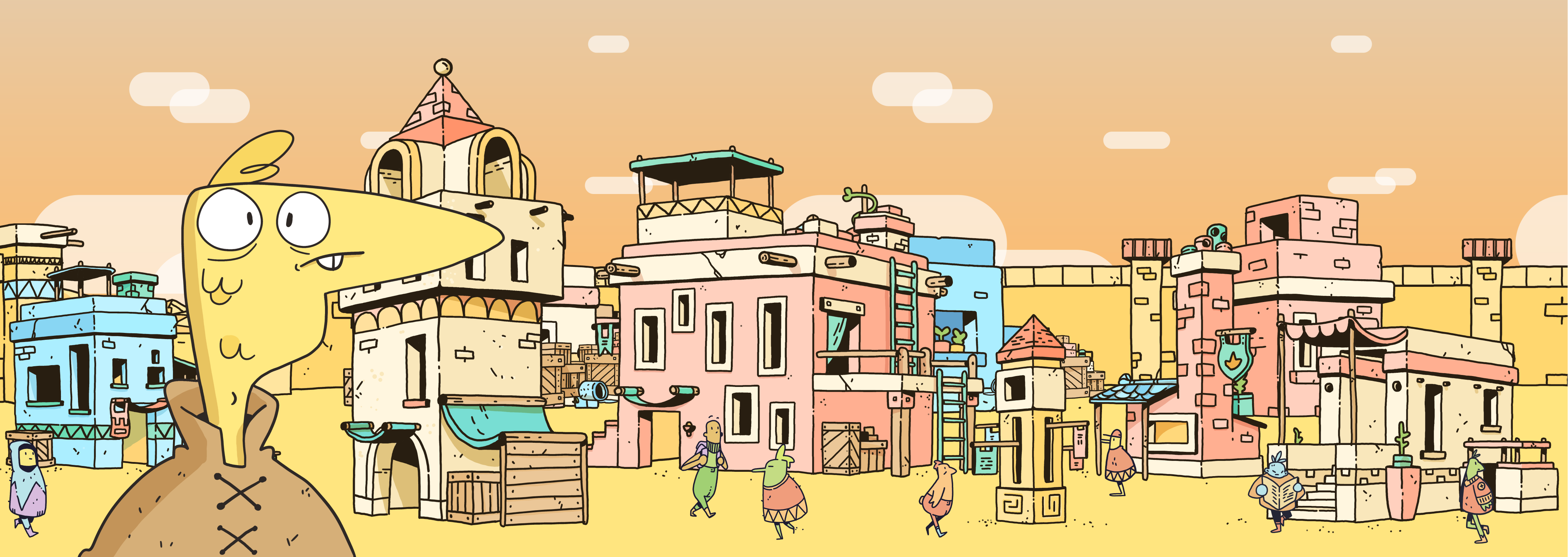
As a digital design studio, through no specific course of action, we seem to have become a specialist in sport and activity tracking apps.
Beginning back in 2010 with a simple marathon directory, word spread and we started getting more and more enquiries, soon branching into full scale projects such as World Walking, Ramblers and Big Team Challenge.
This is what led Glasgow’s Queen Elizabeth University Hospital to our door and took us down the long and eye opening route of game design and development.
From the initial meetings we held with the hospital staff and funders at Glasgow Children’s Hospital Charity, it was clear that they were after some method of both motivating children to aid their recovery and for the staff to be able to track the patient’s progress as they did this. A clear inspiration for the project was World Walking’s website and app, that uses your real life activity to move you along a virtual route. It’s a tried and tested method that has been very popular amongst it’s 20,000+ users, however there’s a catch, most of World Walking’s users are adults.
When it comes to specifically capturing the attention and imagination of children, you have to approach every aspect of a project from a different perspective. For this concept to work we would have to abandon our pre-conceived notions of what an activity tracker should be and explore new avenues of creative thought. During the research phase it became clear that not only was developing a game our best chance at creating an engaging tool for the hospital, but was a fantastic opportunity for our studio to hone a completely new set of skills.
Delving right in, the first challenge for developers Michael Park and Fergus Howe was to find the best software for creating the game itself. The decision came down to the two main applications: Unity and Game Maker Studio 2. After testing on both platforms, Game Maker Studio came out ahead in the end and so began several weeks of testing the limits of the system and exploring how we could utilise this new tool.
As with every project there are inevitably compromises that have to be made between what you dream the project can achieve, and what the time scale will realistically allow. For us an incredibly tight deadline of 6 months was the monster we had to bear and so we had to set in motion a very clear timeline of research, design, development and testing. Ideas had to be refined, refined and refined again so that when it came time to implement, nothing was wasted. What came out of this was an idea to create a game set in a “fantasy” setting, with the main character set out onto a world map to travel, discover and record the towns and “critters” they came across.
Choosing to use “collection” as the main game mechanic not only allowed us room to expand the game if we had the time, but also gave us the opportunity to be creative with the elements, their design and even the story behind them. One major example of this was our choice to add in a “trading card” element, which the player can collect throughout the map.
Our next big problem solving session came in the form of tracking the children’s real-life physical activity. After several approaches including the possible use of GPS trackers or pedometers, we settled on a much more inclusive form that wouldn’t rule out users without these devices. Our solution was a much simpler idea: we would simply ask the users what activity they had done.
Each activity they choose has a corresponding ‘Gold Coin’ value and the more time they spend on that activity during the day, gives them a higher reward. To help reduce incorrect inputs, we added an extra step that requires a parent or guardian’s pin number input. It’s not a perfect system, but it’s one that we feel is the best possible solution to a very specific requirement for a project.
Currently the app is being piloted in the hospital with a closed off registration, so unfortunately the app is not open to the wider public. But if the test phase is successful there are plans to develop the game even further and open it up.
Working on this project has allowed Papertank to stretch some development, illustration, animation and storytelling muscles we don’t often get a chance to show off. We hope that the internal testing phase is a huge success for the hospital and look forward to working on it further in the future.
